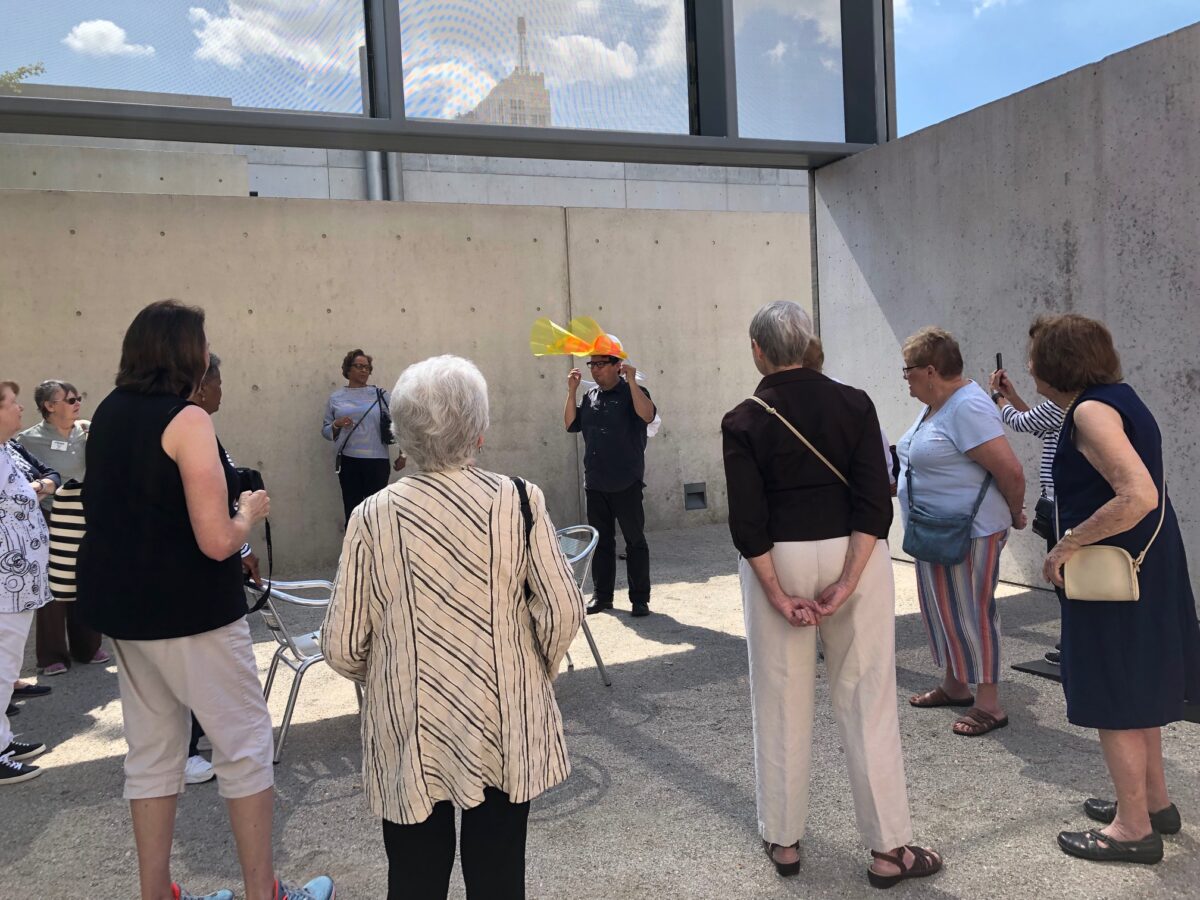Fashionably dressed in white capris and an assortment of artistic printed shirts, a group of twenty adults mill around the café eating croissants and sipping coffee while eagerly anticipating a tour led by CAM’s Museum Educator, José Garza. The group is part of Oasis, an organization that seeks to promote healthy aging through lifelong learning, active lifestyles, and volunteer engagement. Garza starts the tour of CAM’s summer exhibitions by leading the group of first-time and returning visitors to Eric Ellingsen’s Tool Shed.
Stepping outside into the CAM courtyard, the tour group quickly surveys and explores the bright pink shed. They peer out of the rainbow shutters, laugh and take pictures of one another. Garza describes Ellingsen’s summer walkshops throughout the city, and shows off the bizarre headpieces, made by Ellingsen himself, which are used to observe and collect sounds of the surrounding neighborhood. These include white plastic hardhats attached to two neon-orange earhorns, which paradoxically look like megaphones. One Oasis member tries on the makeshift listening device exclaiming, “Oh, these are great. I want one in every color!”
The group moves inside to view Paul Mpagi Sepuya. Garza leads a discussion of the deconstructive, non-traditional nature of Sepuya’s portraiture. The group observes a trio of photographs featuring a black cloth backdrop. Garza poses a question, “What are the similarities between these three portraits?” People remark on the prominence of hands, and note the contrasting skin tones. As the group further investigates the images, they begin to decipher smaller details in Sepuya’s work: hands or legs in the corners of photographs they had not recognized the first time.
Arriving at Lawrence Abu Hamdan: Earwitness Theatre, the group is perplexed by the array of objects placed throughout the gallery space. Garza explains that people describe sound by comparing it to a noise other objects make, and how Hamdan used such sound descriptions, told to him by former Syrian prisoners, in his work. The group walks around the maze of objects in solemn silence and attention. But how do the items on the shelf correlate to specific sounds, they ask. “Why is there a banana on the shelf? What noise do the feather dusters make?”
—Alli Beard
